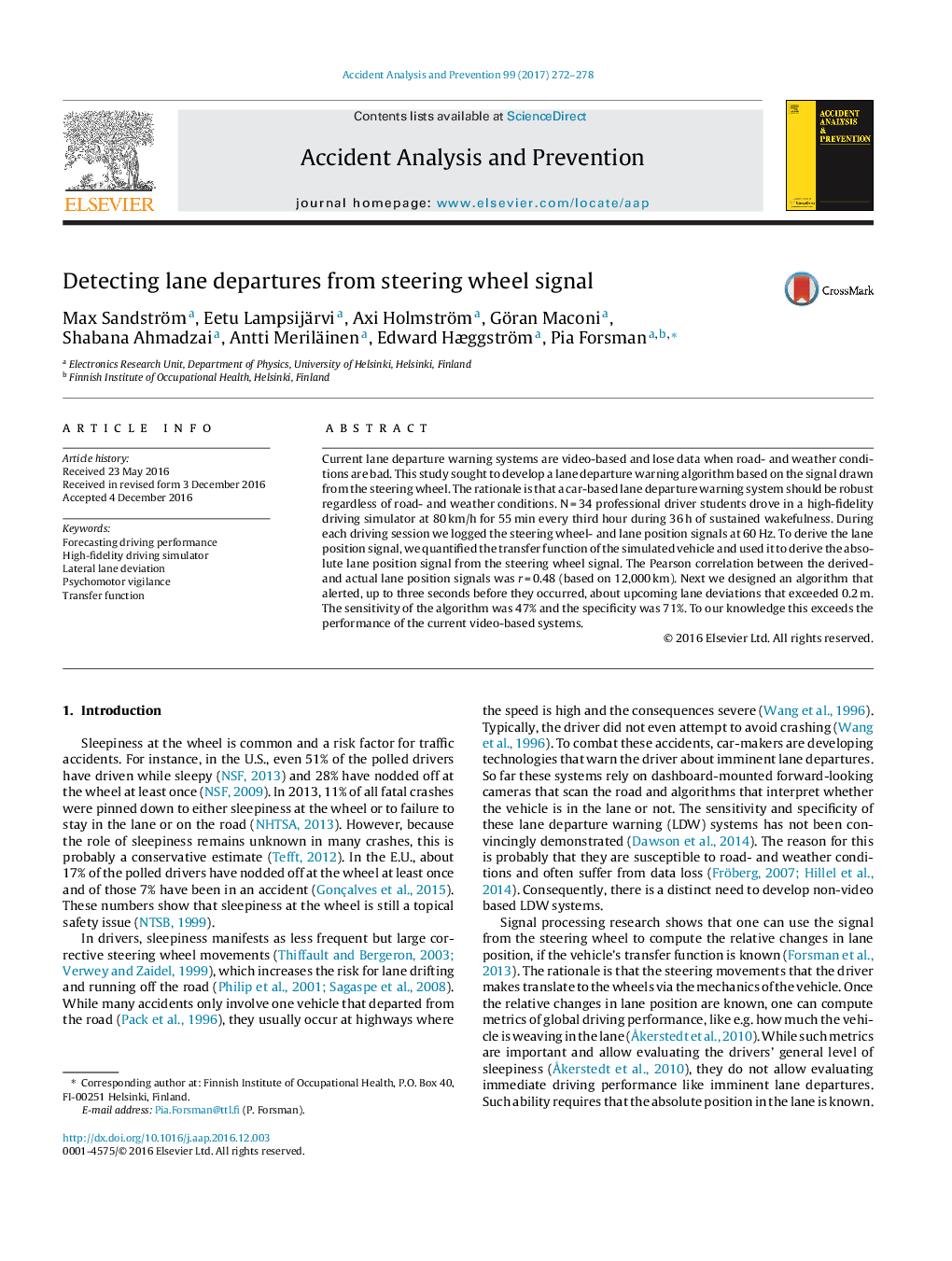| Article ID | Journal | Published Year | Pages | File Type |
|---|---|---|---|---|
| 4978884 | Accident Analysis & Prevention | 2017 | 7 Pages |
Abstract
Current lane departure warning systems are video-based and lose data when road- and weather conditions are bad. This study sought to develop a lane departure warning algorithm based on the signal drawn from the steering wheel. The rationale is that a car-based lane departure warning system should be robust regardless of road- and weather conditions. N = 34 professional driver students drove in a high-fidelity driving simulator at 80 km/h for 55 min every third hour during 36 h of sustained wakefulness. During each driving session we logged the steering wheel- and lane position signals at 60 Hz. To derive the lane position signal, we quantified the transfer function of the simulated vehicle and used it to derive the absolute lane position signal from the steering wheel signal. The Pearson correlation between the derived- and actual lane position signals was r = 0.48 (based on 12,000 km). Next we designed an algorithm that alerted, up to three seconds before they occurred, about upcoming lane deviations that exceeded 0.2 m. The sensitivity of the algorithm was 47% and the specificity was 71%. To our knowledge this exceeds the performance of the current video-based systems.
Related Topics
Physical Sciences and Engineering
Chemical Engineering
Chemical Health and Safety
Authors
Max Sandström, Eetu Lampsijärvi, Axi Holmström, Göran Maconi, Shabana Ahmadzai, Antti Meriläinen, Edward Hæggström, Pia Forsman,
